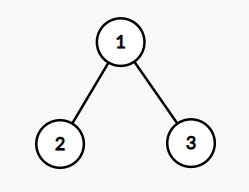CF1554E.You
普及/提高-
通过率:0%
AC君温馨提醒
该题目为【codeforces】题库的题目,您提交的代码将被提交至codeforces进行远程评测,并由ACGO抓取测评结果后进行展示。由于远程测评的测评机由其他平台提供,我们无法保证该服务的稳定性,若提交后无反应,请等待一段时间后再进行重试。
题目描述
You are given a tree with n nodes. As a reminder, a tree is a connected undirected graph without cycles.
Let a1,a2,…,an be a sequence of integers. Perform the following operation exactly n times:
- Select an unerased node u . Assign au:= number of unerased nodes adjacent to u . Then, erase the node u along with all edges that have it as an endpoint.
For each integer k from 1 to n , find the number, modulo 998244353 , of different sequences a1,a2,…,an that satisfy the following conditions:
- it is possible to obtain a by performing the aforementioned operations exactly n times in some order.
- gcd(a1,a2,…,an)=k . Here, gcd means the greatest common divisor of the elements in a .
输入格式
The first line contains a single integer t ( 1≤t≤10000 ) — the number of test cases.
The first line of each test case contains a single integer n ( 2≤n≤105 ).
Each of the next n−1 lines contains two integers u and v ( 1≤u,v≤n ) indicating there is an edge between vertices u and v . It is guaranteed that the given edges form a tree.
It is guaranteed that the sum of n over all test cases doesn't exceed 3⋅105 .
输出格式
For each test case, print n integers in a single line, where for each k from 1 to n , the k -th integer denotes the answer when gcd equals to k .
输入输出样例
输入#1
2 3 2 1 1 3 2 1 2
输出#1
3 1 0 2 0
说明/提示
In the first test case,
 - If we delete the nodes in order 1→2→3 or 1→3→2 , then the obtained sequence will be a=[2,0,0] which has gcd equals to 2 .
- If we delete the nodes in order 1→2→3 or 1→3→2 , then the obtained sequence will be a=[2,0,0] which has gcd equals to 2 .
- If we delete the nodes in order 2→1→3 , then the obtained sequence will be a=[1,1,0] which has gcd equals to 1 .
- If we delete the nodes in order 3→1→2 , then the obtained sequence will be a=[1,0,1] which has gcd equals to 1 .
- If we delete the nodes in order 2→3→1 or 3→2→1 , then the obtained sequence will be a=[0,1,1] which has gcd equals to 1 .
Note that here we are counting the number of different sequences, not the number of different orders of deleting nodes.